The visual tracking is the major process in finding the spot of moving object over time using a camera. Object tracking is challenging task when the object moves fast relative to the frame rate. The active contour algorithm is used for tracking the object in a given frame of an image sequence. In videos particular object motion can be tracked by using stationary cameras but in moving camera the particular object cannot be extracted from background subtraction. Active contour based visual tracking using level sets is proposed which does not consider the camera is stationary (or) moving .The optical flow based algorithm is used for initializing contours at first frame. The correlations between the values of neighboring pixels for posterior probability estimation is done by Markov random field theory in the color based contour evolution. The Independent Component Analysis (ICA) is used to deal 999with noise (or) partial occlusion to obtain the more accurate contours in the shape based contour. To handle the abrupt motions the particle swarm optimization is used to track the object from first frame to last frame and it is applied to current frame to produce an initial contour in next frame. This visual tracking can be used in real time applications like vehicle guidance and control, surveillance and identification, user interface, video processing and medical applications.
Keywords |
| Abrupt motion, active contour-based tracking, adaptive shape model |
INTRODUCTION |
| Visual object tracking is the active research topic in computer vision. The rectangles or ellipses are used to
represent the object in general object tracking[1], where active contour based tracking afford more details about the object
shape information[2], but in general it is more difficult than general tracking of object in the real world situation. This is
because the contour tracking aims to recuperate finer details of the object and extract the object from background
disturbances. A number of different approaches to region tracking have been developed to date, starting from the early
tracking algorithms which concentrated on tracking feature points and edge segments. The region tracking algorithm is
used to track the whole regions and not only attribute points in the region, depend on the shape of the region and motion of
the points, in order to allow the region to be recovered from its feature points. In videos the object motion region can be
extracted in stationary cameras, but in moving camera the object cannot be extracted from the background disturbance.
Active contour-based object tracking does not consider whether the camera is stationary or moving, To describe object
contours two general ways are explicit representations which are characterized by parameterized curves such as snakes and
implicit representations, such as level sets which represent a contour using a signed distance map. The level set
representation is more popular than the explicit representation because it has a stable numerical solution and it is capable of
handling topological changes. Active contour evolution methods are classified into three categories: edge-based, regionbased,
and shape prior-based. The edge based methods consider the local information around the contours, such as grey
level gradient, the snake model[3], geodesic model[4] are used in edge based method. It is sensitive to image noise. Regionbased
methods divide an image into object and background regions using statistical quantities, such as mean[5], variance, or histograms of the pixel values in each region and it is independent for the posterior probability estimation. Shape priorbased
methods are used to recover disturbed, occluded, or blurred contour sections |
II. PROPOSED WORK |
| In this paper, analysis the main restrictions in contour tracking, and present a framework for tracking object
contours, no matter whether the camera is stationary or moving. The active contour based visual tracking using level sets
are proposed. At the first frame, the ego motion compensation is used to compensate the camera motion and then the optical
flow at each pixel is estimated in which one or more motion regions are detected. The boundaries of these motion regions
are used as the initial contours. These initial contours are then evolved using color information. Based on the color-based
contour evolution result, the shape prior based ICA technique is used to deal with noise or partial occlusion etc to obtain
more accurate contours. Abrupt motion is checked with first frame, when there is no abrupt motion, the progress result in
the current frame is used as the initial contour of the object in the next frame. If there is abrupt motion, the affine motion
parameters are estimated using a stochastic algorithm, and applied to the contour in the current frame to obtain the initial
contour for the next frame. The region based level sets include contour-based tracking initialization. For the first frame,
color-based contour evolution, shape-based contour evolution, and abrupt motion handling |
A. Tracking Initialization |
| Tracking initialization which consists of the contour initialization in the first frame and modeling the object and
background regions .The automatic and fast tracking initialization algorithm based on the optical flow detection is used. In
the first frame, the optical flow magnitude and direction[6] is used to detect motion regions whose boundaries are used as
the initial contours. The ego-motion compensation is used to compensate camera motion. Each pixel in optical flow is
represented by (u,v ), where u and v are the optical flow velocity vector’s components in the x and y directions respectively.
For a pixel the magnitude is less than a predefined threshold, its optical flow is set to (0, 0), it is assigned to the
background. The detection algorithm includes the size of the shape model is fixed and the centre of the object is moved then the series of regions {Mi }, of various sets of pixels is produced. The object and background regions are both modelled
in the active contour based object tracking algorithm to compete for pixels in the image. To model the object and
background regions the hierarchical method[7] is used, which fuses color and texture features using a Gaussian mixture
model (GMM). |
| B.Color Based Contour Evolution. |
| The contour evolution is used to adjust an initial contour awaiting the image is partitioned optimally by the
contour[8],[9] into a foreground region and a background region. According to bayes rule the pixel values in the object
region or a background region are independent for posterior probability and likelihood estimation. The independence of
pixel values for posterior probability and likelihood estimation is too strong, especially when there are local associations
between pixels, such as for textured regions or regions with repeated patterns. As a result it is easy to misidentify pixels
around object boundary sections where the contrast between the object and the background is low. To overcome a problem
the correlations between values of neighbouring pixels are constructed using Markov Random Field theory and it is
incorporated into estimation of the posterior probability of segmentation. It is not sensitive to background disturbances and
that it achieves tight and smooth contours |
| C. Shape based contour evolution |
| To obtain a contour closer to the true contour, the global shape information and the local color information are
combined in hierarchical shape-based contour evolution algorithm .the shape based contour evolution includes shape
registration and construction of subsequence, and the mahalanobis distance based criterion. A novel incremental ICA[10] is
applied to update the shape model in a more flexible way than in the previous shape model updating algorithm. The
Paragios’ variational method is used to implement the shape registration. Each contour shape is represented using its
corresponding level-sets signed distance map φ. Shape registration from shape A to shape B involves scaling, rotating, and
trans- lating shape A to obtain a new shape which best matches shape B.The contour shape subspace is constructed from a
training sequence, it obtain a series of training shape samples of the object which is to be tracked in the test sequence. The
shape registration aligned each sample in the signed distance maps. The level set embedding function values in each
distance map are flattened into a coned each column vector. The Mahalanobis distance-based criterion is used to determine
whether the shape model is introduced into the contour evolution process. If it occurred the shape-based evolution which
adapts to different contour locations is used to further evolve the contour. |
| C.1.Independent Component Analysis |
| Incremental updating of shape model using the contours obtained from the recent frames is necessary for shape
based contour tracking, as the recent years provide more accurate information about the current shape of the object. In
signal processing, independent component analysis (ICA) is a computational method for separating a multivariate signal
into additive subcomponents and pretentious the subcomponents are non-Gaussian signals and that they are all statistically
independent from each other. ICA is a unique case of blind source separation. When the statistical independence statement
is correct, blind ICA separation of a mixed signal gives very good results. It is also used for signals that are not supposed to
be generated by a mixing for analysis purposes. The two broadest definitions of independence for ICA are Minimization of
mutual information, Maximization of non-Gaussianity.Typical algorithms for ICA use centering, whitening and
dimensionality reduction as pre-processing steps in order to simplify and reduce the complexity of the problem for the
actual iterative algorithm. Whitening and dimension reduction can be achieved with principal component or decomposition.
The updating of shape model is done by independent component analysis. When the shape change is large the shape model
update frequently as one frame, it is more flexible and rapid shape updating. |
| D.Abrupt motion |
| When the shape contour evolution is completed it checks for abrupt motion [11] in previous frame and current
frame. If the abrupt motion is occurred the particle swarm optimization is used to estimate the motion parameters and it is
applied to contour in previous frame to obtain initial contour in current frame. After that the initial contour is evolved to
endow with segmentation of the object. |
| D.1.PSO Algorithm |
| Traditional contour tracking methods cannot handle abrupt motion or low frame rate video. This is because the
basis of the traditional tracking lies in the hypothesis that the motion is smooth between consecutive frames, but the abrupt
motion destroy the hypothesis of that motion .As a two-layer hierarchical level set-based tracking framework in which
Particle Swarm Optimization (PSO)[12] and level set evolution are fused seamlessly. In the first layer, the PSO is adopted
to capture the global motion of the object. The coarse contour is obtained by applying the global motion to the contour in
the previous frame. For the second layer, the level set evolution based on the coarse contour is carried out to track the local
deforming, which results in the actual contour. Particle Swarm Optimization (PSO) into level set evolution which can
successfully handle the contour tracking in abrupt motion and low frame rate (LFR). The proposed algorithm possesses the
following features which distinguish it from the conventional level set based contour tracking approaches: first, the
parametric optimization (PSO) and non-parametric optimization (level set) are combined under a unified framework to the
solve the difficulty induced by the abrupt motion. Second, the training process to learn the motion model is not need due to
evolution strategy. The approach does not require prior knowledge of motion which is not always available. Third, prior
appearance model for the level set evolution fuses color and texture seamlessly to make our approach more tolerant to noisy
environments. Finally, it shows theoretically that our approach is essentially a combination of the deterministic and
heuristic stochastic search to cope with the abrupt motion |
III. EXPERIMENTAL RESULTS |
IV. CONCLUSION AND FUTURE WORK |
| The color-based contour evolution algorithm which applies the MRF theory to representation the correlations
between pixel values for posterior probability estimation is more to background disturbance than the region-based method
which does not consider correlations between the values of neighbouring pixels for posterior probability estimation. The
adaptive shape-based contour evolution algorithm, which efficiently fuses the global shape information and the local color
information and uses a flexible shape model updating algorithm, is robust to partial occlusions, weak contrast at the
boundaries, and motion blurring, etc. The PSO based algorithm can effectively deal with contour tracking for videos with
abrupt motions, and it outperforms the particle filter-based algorithm. The future work is done for the tracking of multiple
moving objects by graphical based method. In this shape, color along with this structure of the object is also considered. |
Figures at a glance |
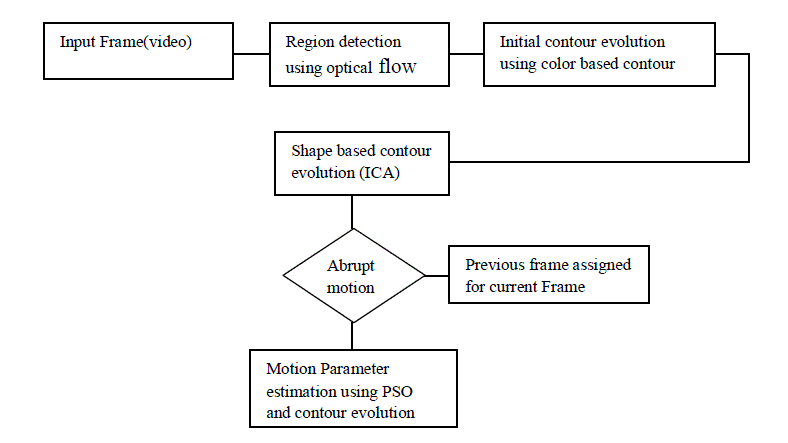 |
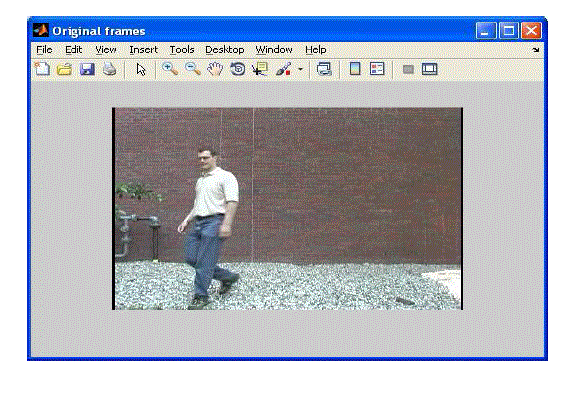 |
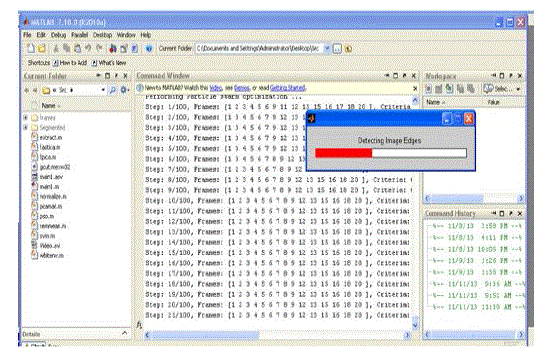 |
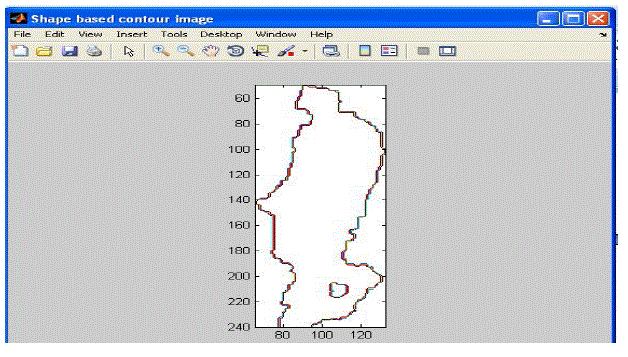 |
| Figure 1 |
Figure 2 |
Figure 3 |
Figure 4 |
|
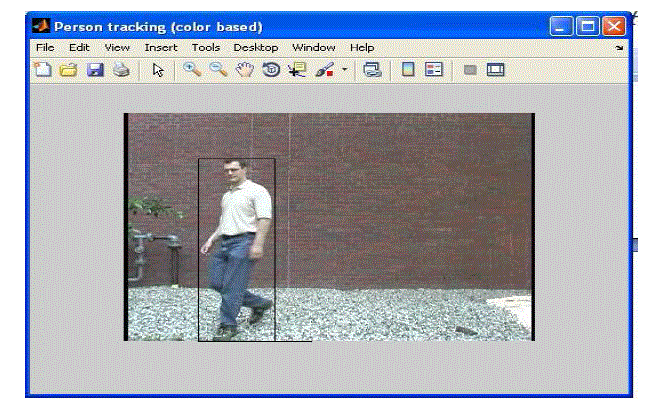 |
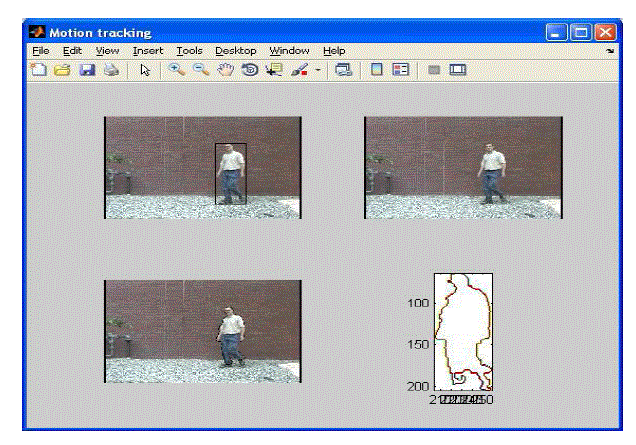 |
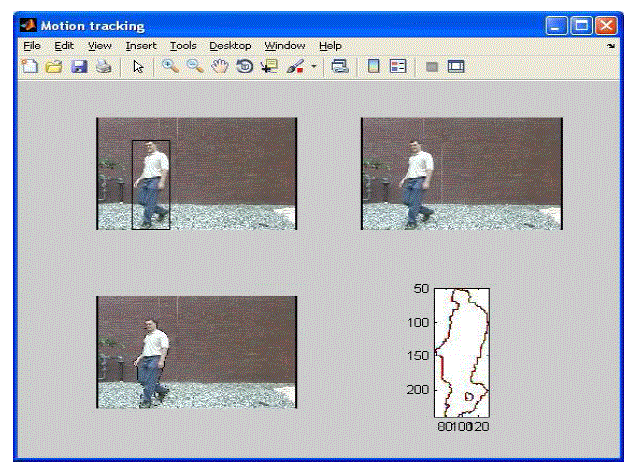 |
| Figure 5 |
Figure 6 |
Figure 7 |
|
| |
References |
- X. Zhou, W. Hu, Y. Chen, and W. Hu, âÃâ¬ÃÅMarkov random field modeled level sets method for object tracking with moving cameras,âÃâ¬Ã in Proc. AsianConf. Compute. Vis., 2007, pp. 832âÃâ¬Ãâ842.
- D. Cremers, M. Rousson, and R. Deriche, âÃâ¬ÃÅA review of statistical approaches to level set segmentation: Integrating color, texture, motion and shape,âÃâ¬ÃÂInt. J. Comput. Vis., vol. 72, no. 2, pp. 195âÃâ¬Ãâ215, Apr. 2007.
- M. Kass, A. Witkin, and D. Terzopoulos, âÃâ¬ÃÅSnakes: Active contour models,âÃâ¬Ã Int. J. Comput. Vis., vol. 1, no. 4, pp. 321âÃâ¬Ãâ331, 1988.
- V. Caselles, R. Kimmel, and G. Sapiro, âÃâ¬ÃÅGeodesic active contours,âÃâ¬Ã Int.J. Comput. Vis., vol. 22, no. 1, pp. 61âÃâ¬Ãâ79, Feb. 1997.
- T. F. Chan and L. A. Vese, âÃâ¬ÃÅActive contours without edges,âÃâ¬Ã IEEE Trans.Image Process., vol. 10, no. 2, pp. 266âÃâ¬Ãâ277, Feb. 2001.
- B. Horn and B. Schunck, âÃâ¬ÃÅDetermining optical flow,âÃâ¬Ã Artif. Intell.,vol. 17, pp. 185âÃâ¬Ãâ203, Aug. 1981.
- C. Stauffer and W. E. L. Grimson âÃâ¬ÃÅAdaptive background mixture models for real-time tracking,âÃâ¬Ã in Proc. IEEE Conf. Comput. Vis. Pattern Recognit.,vol. 2. Jun. 1999, pp. 246âÃâ¬Ãâ252.
- S. C. Zhu and A. Yuille, âÃâ¬ÃÅRegion competition: Unifying snakes, region growing and bayes/MDL for multiband image segmentation,âÃâ¬Ã IEEETrans. Pattern Anal. Mach. Intell., vol. 18, no. 9, pp. 884âÃâ¬Ãâ900, Sep. 1996.
- Yilmaz, X. Li, and M. Shah, âÃâ¬ÃÅObject contour tracking using level sets,âÃâ¬Ã in Proc. Asian Conf. Comput. Vis., 2004, pp. 1âÃâ¬Ãâ7.
- M. Fussenegger, P. M. Roth, H. Bischof, and A. Pinz, âÃâ¬ÃÅOnline, incremental learning of a robust active shape model,âÃâ¬Ã in Proc. DAGM-Symp. PatternRecognit., 2006, pp. 122âÃâ¬Ãâ131.
- J. Sullivan and J. Rittscher, âÃâ¬ÃÅGuiding random particles by deterministic search,âÃâ¬Ã in Proc. IEEE Int. Conf. Comput. Vis., vol. 1. Jul. 2001, pp.323âÃâ¬Ãâ330.
- J. Kennedy and R. C. Eberhart, âÃâ¬ÃÅParticle swarm optimization,âÃâ¬Ã in Proc.IEEE Int. Conf. Neural Netw., Nov.âÃâ¬ÃâDec. 1995, pp. 1942âÃâ¬Ãâ1948.
|